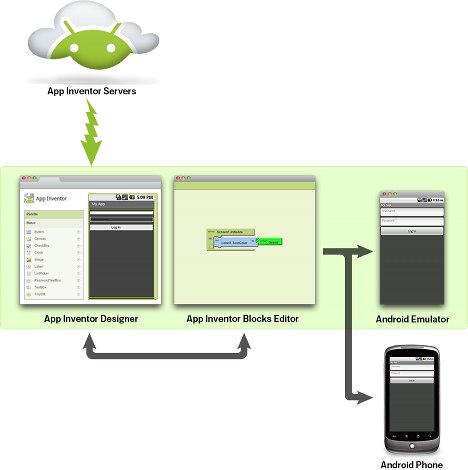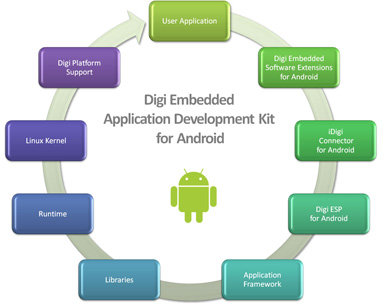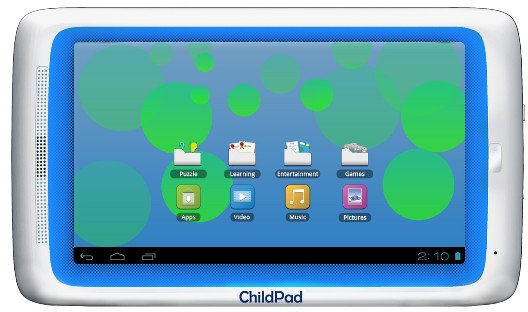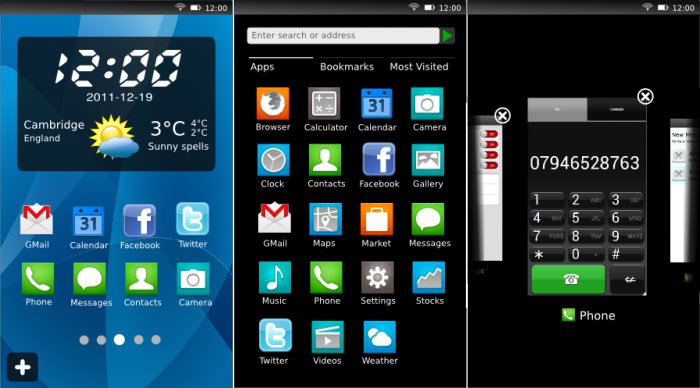At the end of 2010, Google Introduced App Inventor, a web based tool allowing non-programmers to easily design Android applications, before phasing it out at the end of 2011. Google eventually made App Inventor open source and it is now handled by the Massachusetts Institute of Technology (MIT) which planned to make a beta version of App Inventor available to the general public in Q1 2012. This happened yesterday, as the MIT App Inventor service is now open to everyone and all you will need is a Google ID for log-in such as a gmail account. There is no need to install any software as was the case with the original version of App Inventor and everything is handled in the web browser. Since this is the first release, MIT explains that there may be issues due to the load from a large number of users and there may be […]
Raspberry Pi Releases Arch Linux SD Card Image
The Raspberry Pi Foundation has just announced the release of Arch Linux for the Raspberry Pi. This image is based on a minimal image of Arch Linux and does not come with a graphical interface. This distribution may not be suitable for beginners and you may be better off using the Debian SD Card image or even the upcoming Fedora 14 Raspberry Pi Remix image. You can always install extra packages with Pacman, the Arch Linux package manager. To update the package list:
|
1 |
pacman -Syu |
To Install LXDE Graphical Interface:
|
1 |
pacman -S lxde xorg-xinit xf86-video-fbdev |
To run LXDE:
|
1 |
xinit /usr/bin/lxsession |
You can download it using BitTorrent: archlinuxarm-01-03-2012.zip.torrent (preferred method) or via one of the HTTP mirrors: archlinuxarm-01-03-2012.zip. (This link will redirect your download to the closest available HTTP server). The default login credentials are: root/root I haven’t tried it, but you should be able to use this release in qemu, by following instructions similar to the one […]
Digi International Unveils Embedded Application Development Kit for Android
Digi International has released its Application Development Kit for Android (the world first Android embedded application devkit according to the company) at Embedded World 2012. This Development Kit is comprised of both software and hardware components. The software development kit (SDK) includes drivers and Digi software extensions to create Android-based applications on embedded platforms while eliminating tedious driver development work. The kit also includes one of 2 Digi Wireless modules based Freescale i.MX51 (ConnectCore Wi-i.MX51) and i.MX53 (ConnectCore for Wi-i.MX53). The complete Digi Android development kit includes: Quick start guide Digi Application Development Kit for Android CD/DVD Documentation and development board schematics ConnectCore Wi-i.MX53 module – 1 GHz Freescale i.MX53, 512 MB NAND Flash, 512 MB DDR2, -20 to +70° C. 7″ WVGA LCD panel with touchscreen Digi JumpStart Kit development board: 3 serial ports (1 x RS-232/422/485, 1 x RS-232 Tx/Rx, 1 x TTL) VGA and HDMI 1.3 video outputs […]
Rockchip Introduces RK30xx Dual Core Cortex A9 Processors for Low Cost Tablets
Rockchip announced their next generation mobile processor at Mobile World Congress, in Barcelona, Spain. The Rockchip RK30xx series (RK3018?) features a dual core Cortex A9 clocked up to 1.4 GHz coupled with an ARM Mali-400 GPU and targets low cost Android 4.0 tablets. The Rockchip RK30xx platform features: Dual-core ARM Cortex-A9 processor with up to 1.4GHz speed, implemented with Artisan Processor Optimization Pack (POP) Quad-core ARM Mali-400 MP GPU, supporting OpenGL ES 1.1/2.0 and OpenVG 1.1 Full memory support, including DDRIII, DDRII, and LPDDRII High performance dedicated 2D processor 1080P multi-format video decoder 1080P video encoding for H.264 and vp8 Stereoscopic 3D H.264 MVC video codec Embedded HDMI 1.4a, supporting 3D display Embedded 60bit/s ECC, supporting MLC NAND, E-MMC, i-NAND and booting Support of dual panel display and dual camera Rockchip also said the complete BSP is already available for the chip. This company does not usually release BSP publicly […]
How to Install Windows 8 in Linux with QEMU
Microsoft has just released Windows 8 Consumer Preview. Here’s a method to install Windows 8 in Linux using KVM and Qemu. You can use this beta version of Windows 8 until the 15th of January 2013, after which it will be unusable. Here are the requirements to install Windows 8: 1 GHz Processor or greater 1 GB RAM 20 GB free storage for the 64-bit version Before you start, make sure your processor supports Intel Virtualization Technology (VT) or AMD’s AMD V CPU virtualization extensions. Type this command to check vmx or svm flags:
|
1 |
egrep --color "(vmx|svm)" /proc/cpuinfo |
If this is the case, you can install KVM. Type the following command for RPM-based distributions such as Fedora:
|
1 |
sudo yum install kvm |
or the following command for Debian or Ubuntu:
|
1 |
sudo apt-get install qemu-kvm |
Then download the ISO image of Windows 8 on Microsoft website (64-bit version) :
|
1 |
wget http://iso.esd.microsoft.com/WCPDL/BD1B8A49393E30CC9C4E5C88457D73E964F1F3B18/Windows8-ConsumerPreview-64bit-English.iso |
Create a 20 GB virtual hard drive to install Windows 8: […]
Free Electrons Releases Embedded Linux Training Materials
Free Electrons, a technology company offering embedded Linux consulting services as well as embedded Linux training, has released their training materials for Linux and system development for embedded systems including their Lab sessions. The training materials are available in their git repository in LaTeX format. If you want the latest documentation in PDF, you’ll need to build it by following those steps: Install the required packages:
|
1 |
sudo apt-get install git dia inkscape texlive-full python-pygments |
Get the embedded Linux slides source:
|
1 |
git clone <a href="git://git.free-electrons.com/training-materials.git">git://git.free-electrons.com/training-materials.git</a> |
Build the training materials:
|
1 2 3 4 |
cd training-materials make full-sysdev-labs.pdf make full-kernel-labs.pdf make full-sysdev-slides.pdf |
The last three commands will generate the PDF files respectively: full-sysdev-labs.pdf – Embedded Linux Training Lab Book (58 pages) with instructions for the IGEPv2 board based on on TI DM3730 or OMAP3530. full-kernel-labs.pdf – Linux kernel and driver development training Lab Book (37 pages) full-sysdev-slides.pdf – Embedded Linux system development presentation slides (506 pages) Free Electrons also have slightly older version of full-kernel-labs.pdf and full-sysdev-slides.pdf available for download as PDF so […]
Archos Announces 129 USD Android 4.0 Child Pad Tablet
Archos announced the Child Pad, an Android 4.0 (ICS) Tablet with a 7″ capacitive touchscreen featuring an unnamed 1 GHz Cortex A8 processor (possibly a Rockchip RK2918) with 1GB of RAM, 4 GB internal storage and an SD slot for up to 32GB. This tablet aimed at kids includes access to the Kids App Store – powered by AppsLib – with 14 categories and over 10,000 apps including games, entertainment, communication, multimedia, books, comics and sports. As you can see in the picture above, the user interface has been customized to be “kid-friendly” with colored icons, home screen folders with direct access to games, entertainment, learning and puzzles. The device will come pre-loaded with 28 “kids’ apps” including Angry Birds, Pig Rush and Flight Frenzy. Archos has also designed the Child Pad to comply with CIPA (pronounced like SIPA?) and COPPA US regulations in order to “ensuring a safe tablet […]
B2G (Boot to Gecko) Video Demo at MWC 2012
B2G (Boot to Gecko) is an open source HTML5-based operating system targeting mobile devices by the Mozilla Foundation. This OS runs on top of Linux and uses Firefox as the web browser. You can get further details on my previous post “Mozilla Boot to Gecko (B2G) OS Is Coming to Your Smartphone“. As previously announced, Mozilla showcased B2G on a Samsung Galaxy S2 at Mobile World Congress 2012. Every apps are written in HTML5 including the camera application that uses HTML5 Media Capture and Canvas for real-time effects. Engadget was there and shot the video demo below. If you have a Samsung Galaxy S2, you can build and try it on your device. This is experimental, so there is always the risk of bricking your phone. Jean-Luc Aufranc (CNXSoft)Jean-Luc started CNX Software in 2010 as a part-time endeavor, before quitting his job as a software engineering manager, and starting to […]








